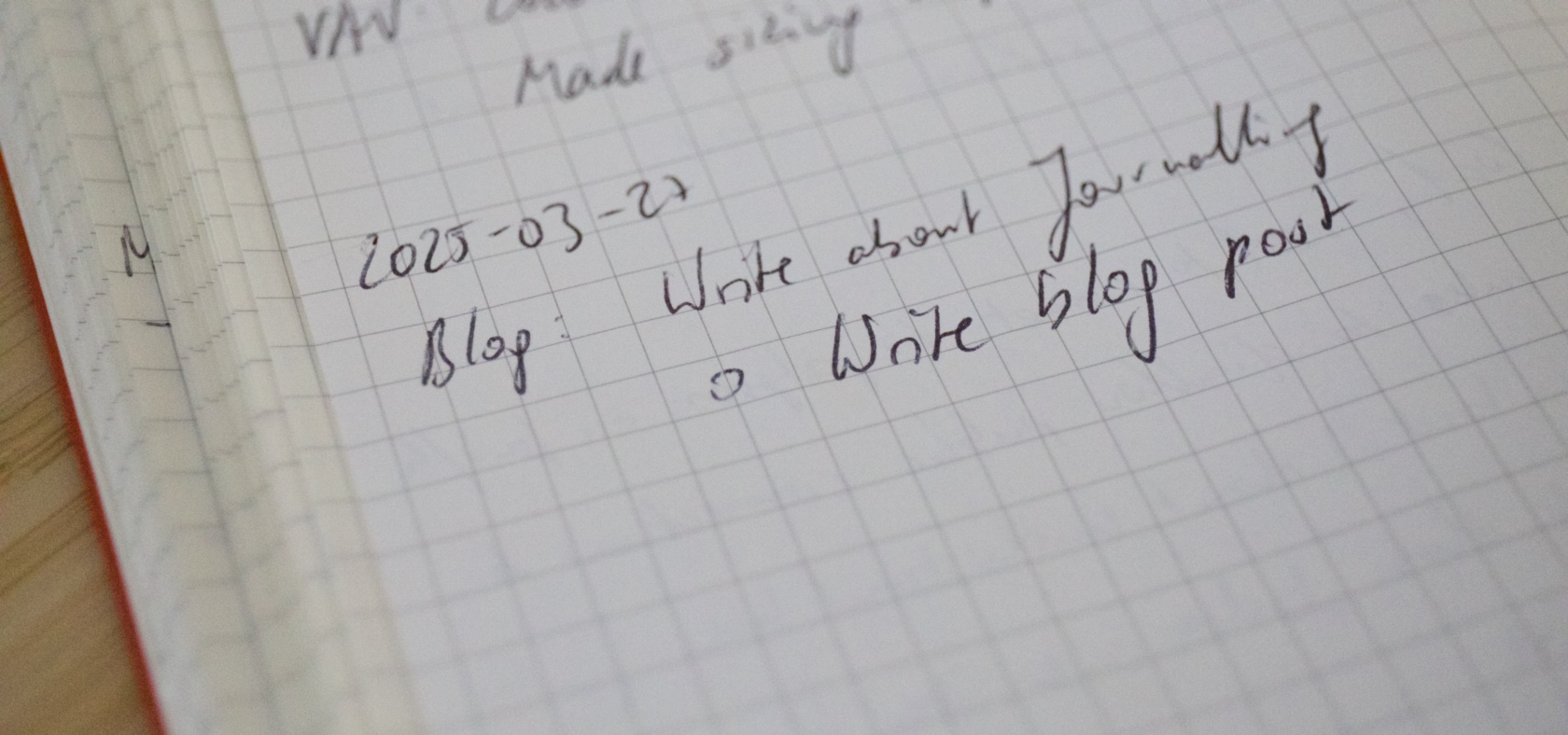Journaling for Productivity
A technique that helped me focus is journaling, by hand, on paper. I can assure you that the first time I heard about journaling in a professional context, I must’ve rolled my eyes violently. But I’ve been doing it consistently for over a year, and I feel that it has finally stuck. I miss it when I leave my notebook somewhere.

The strategy is quite simple: I note the date and the project I am working on and start writing down what I’m doing or what I’m thinking about. When I feel that I am running in circles, I write down my conundrum. When I’ve achieved something, I write it down.
When I used to have a meeting, I’d pull out a sheet of paper, write down my notes, and then put it to the side. The effect was a stack of loose sheets with random notes. What meeting? When? Nobody really knows. My poor in-meeting notetaking skills, compounded with a total lack of structure, made it difficult to keep track. With a chronological log, it’s much simpler: There is a date on the sheet. I don’t lose it. When I flip through the pages, I know the mental context I’ve been in.

What I write down isn’t official or polished or ready to be shared with anybody, but this provides me with a certain kind of freedom. It allows me to forget, because it’s already written down.
Deciding on Something
“Something with A didn’t feel right, B wasn’t our preferred choice either, so I went with C,” is a common template for summarizing a decision. The more time that has passed since the decision, the murkier the arguments become.
Now, when I do solution discovery, I just write down everything in real-time. When I need to compile a report later or revisit my decision because some externality has changed, I go back to my notes.
It also takes away the pressure to remember non-critical details. As soon as it’s written down, my mind is allowed to drop it, and I can move on to the next thing immediately.1 If a customer asks what I’ve billed for, I don’t have to reconstruct it by combing through emails or my Git commits; I can simply go through my journal log.
It’s not perfect; the sorting is chronological, and then there is a project title, but there is no search function – it’s just paper, after all. But I don’t really want something digital. I own an iPad Pro with a Pencil, but it’s another attention-grabbing device. I have looked at the reMarkable tablets, but my handwriting has gotten rather messy, and I don’t see the point in digitizing my notes unless it gets to a machine-readable state.
My paper notebook doesn’t need software updates, it can’t display notifications, I don’t have to pay a monthly fee, and the worst thing that can happen is that I run out of ink.
It took me a while to make it stick. It wasn’t a success right away, and it certainly takes discipline, like any other habit. For me, the right format and a nice pen made it more pleasant.2 Compared to more radical productivity ideas like committing yourself to a monastery or waking up at five and taking cold showers, I can assure you it’s cheaper and definitely worth a try, but do give it a bit of time to sink in!
There is a concept called attention residue (Leroy 2009) that describes how switching to a new task is hindered by the previous one. Writing a thought down helps me to disengage from the old task. ↩︎
If you want to replicate my “setup”: It’s a LEUCHTTURM1917 Hardcover Medium (A5), Fox Red, checkered and a Parker Jotter Stainless Steel with Golden Finish. ↩︎
